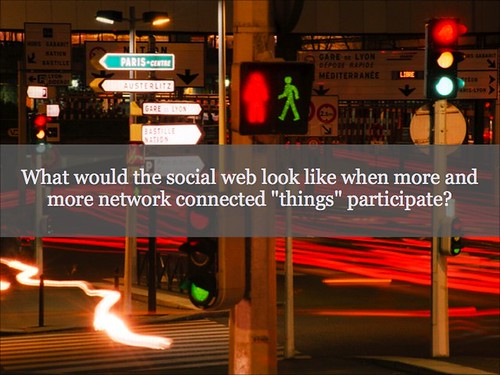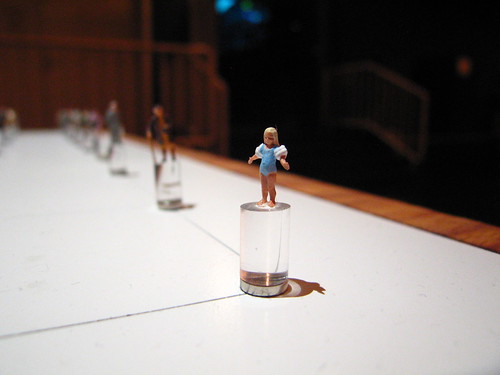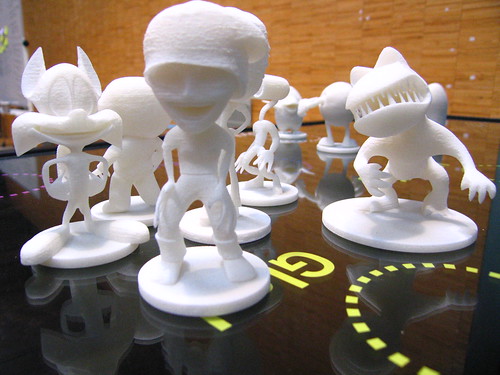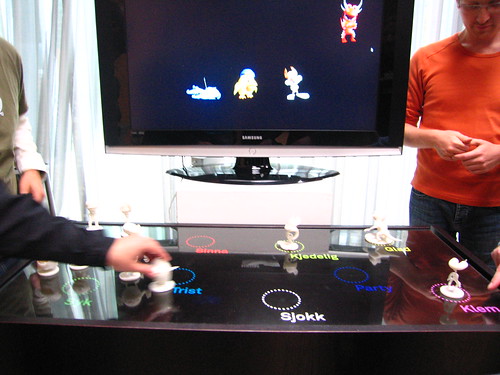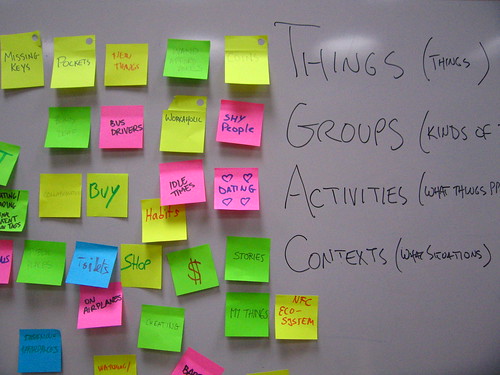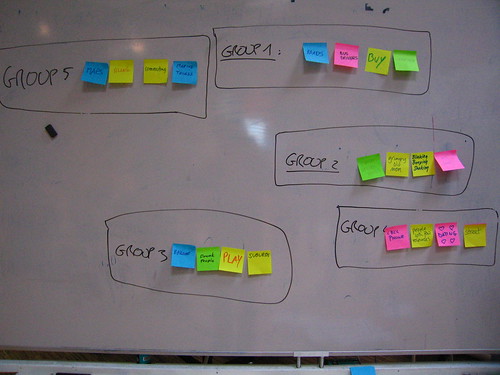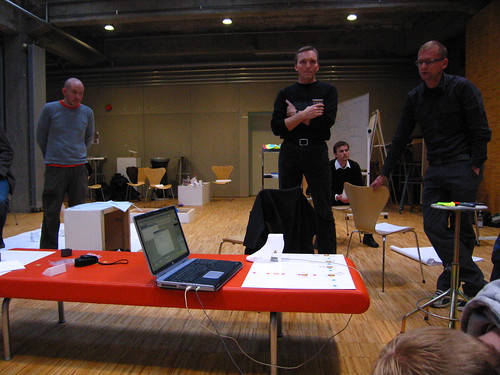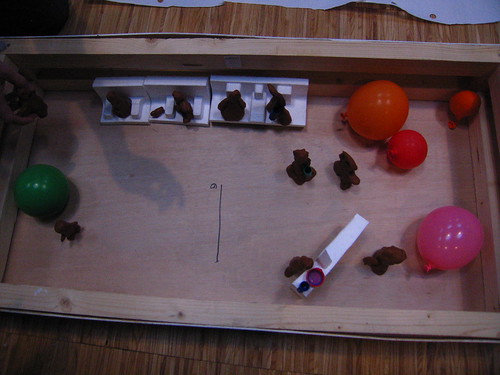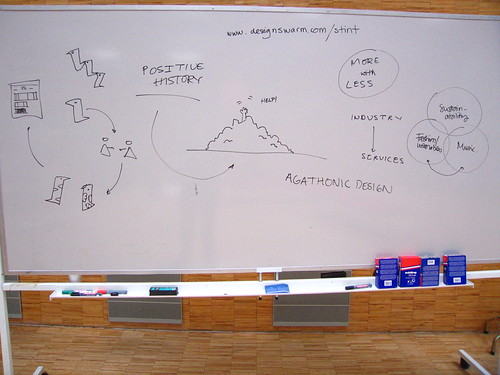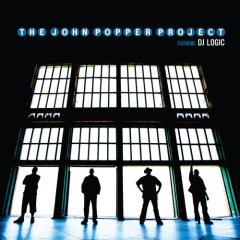photo background cc by benlo (http://www.flickr.com/photos/25203067@N00/58482958/)
Here are slides from my keynote at the Cross Media Week “Internet of Things” session. The talk itself was more extemporaneously authored from an outline and notes than written, but the slides capture the major conceptual beats.
Keynote Outline:
From a Social Web to a Internet of Things: What happens when 1st Life & 2nd Life mash up?
Main Points
a. the digital communications network known as the Internet is an instrument of social engagement & exchange, and its instrumentalities (devices, databases, routers, web servers) are part of that social engagement & exchange. When other kinds of objects are “hooked-into” that network, they are caught up in the messy imbroglio of the social life of the internet.
If this is the case, then we should consider these objects as not inert objects, but social actors that shape and inform the kind of discourse that happens on these networks. So, i will refer to the various and diverse social actors amongst these networks (internet, intranet, whatever) variously as “participants”, social actors, social objects, and so forth. The reason is to emphasize that anything and anyone within the network has a role to play in the creation of social life of various kinds.
1st Life is (imprecise, but convenient) shorthand for the world we occupy when we are ostensibly disengaged from the realm of digital networks. 2nd Life is (imprecise, but convenient) shorthand for the social place made through digitally networked publics “online.”
b. The Internet of Social Beings
If we think about the Internet as a place that has exerted a good deal of influence on the way social beings interact, and has transformed digital, instrumented networks into networks in which culture is made and creativity is circulated, what will happen when that network also encompasses other kinds of interaction partners that previously were bound exclusively to 1st Life, as we once were?
If the Internet of Social Beings has significantly altered how power is asserted, how politics are enacted, and what gets to count as play and entertainment, what will happen when it is not just social beings participating as digitally networked publics?
c. The 1st Internet of Things
ITU Report on the Internet of Things for strategy & policy professionals in the telecommunications trade, stakes the terrain for networked devices designed specifically for operational efficiency, inventory management, process controls, etc. Largest practice is knowing where all your stuff is, for large distributed 1st Life enterprises. The goal is to create linkages between digital representations of inventory items and the inventory items themselves — in other words, between databases and the things the database represents. The assumption is that if you can make a bridge that represents a 1 to 1 correspondence between digital and physical instances, you’ll have arrived at operational nirvana.
This requires that many difficult and possibly intractable problems be considered, such as figuring out where something is, and how you know something is what it appears to be. So, tagging enters the problem space, and with RFID you have a way to tag objects and create that hypothetical bridge in that an RFID tag can be made to correspond to, on the one hand, an entry in a database and, on the other hand, a box on a shelf in the back of a delivery vehicle. 1st Life / 2nd Life bridges.
d. What happens when 1st Life Things Participate in the Network?
When a previously inert “thing” is made to digitally participate, alongside of the already-there inhabitants of 2nd Life networks “thing”, it becomes something else — a social actor able to exert influential and asserts itself by shaping the social practices that surround it.
Examples:
* Cisco routers that can block network traffic incites political and social debate over freedom of speech
* RFID and operations control over the movement of inventory changes retail practices
* FBOWeb, tracking aircraft
What do we know about other social beings, other than humans, on the Internet? What is the precedent for other species, objects, artifacts on the network?
Examples:
* Experiments in Galvinism (Garnet Hertz)
* Fly (with implanted webserver) (Garnet Hertz)
What are some early signals that objects participate in a distinctive way in the social web? “Blogjects”, which are? Does social practice really inflect because things participate in the social web?
Examples:
* Pigeon Blog
* Hedgehog Blog (we laughed at home pages, but now we have MySpace)
* Critter Cams
* Video surveillance blogs
e. A New Episteme — Transformations.
Operational efficiency and optimization shape the 1st Internet of Things, what is the 2.0 Internet of Things? What is the distinctive shift that marks a boundary between an instrumented Internet of Things and an Internet of Things that asserts social practice over the instrumentalities of technical things like RFIDs and machine-to-machine sensor networks? What are the systemic, epistemic transformations that occurred in the social web? And will these transformations be exempt from a web of things? And given these transformations, what might we want from an Internet of Things?
f. 5 Transformations
* means and mechanisms for asserting power and engaging in political processes are now recognized to have been transformed
* reconfigured meanings of leisure, entertainment & play
* apparatus and the way we engage it changes (terminals all over, rather than the fixed, single PC)
* DIY practices from the fringe shape the kinds of engagements we have with media, with community practices, with social life online (i.e. what we do online is shaped by a vanguard of digital craftspeople operating without the burden of age & wisdom — they take risks and do it because it feels right)
* the linkages amongst social agents shapes the digital public sphere, we can know lots about everyone and everything. privacy is made public.
g. The 2nd Internet of Things — 1st Life & 2nd Life Meet
Once you’ve started working through this problem of bridging 1st Life and 2nd Life, you’ve opened up a whole new set of possibilities for what you can do with digital networks. Those networks need not be constrained to terminate at data terminals, LCD screens, laptops or even our mobile phones. The network can reach other kinds of objects entirely — not just ones designed for direct human interaction, like computers.
What is a social web that includes not just teenagers on MySpace, but trees equipped with sensors that verbally complain to the noise abatement authorities when audio levels in their park grow too loud?
When things are linked into the digital network they can’t help but become engaged in the social practices that are already in full swing therein. The weak signals indicate that the linkage is bidirectional — into 1st Life from 2nd Life as well as 2nd Life into 1st Life.
Examples:
* Nike+
* AiR project
* Tripwire
* Crossroads Game
* Pigeon Blog
* Animal Crossing
* Insectopia Game
h. Summary and Conclusions
Technorati Tags: Internet of Things, networked publics, pervasive electronic games, theory object
